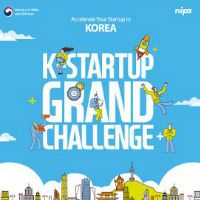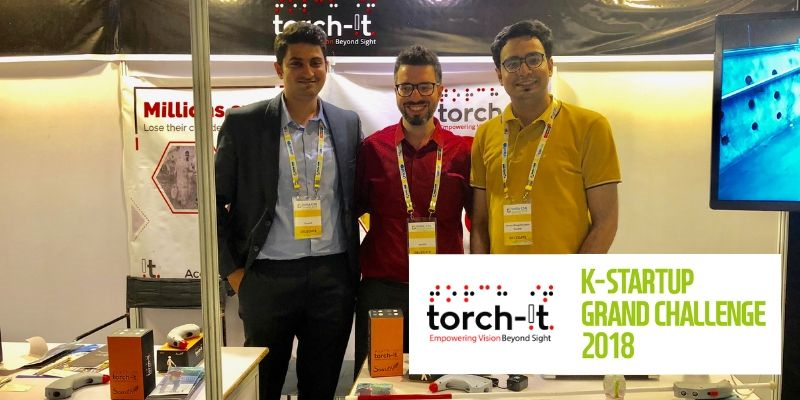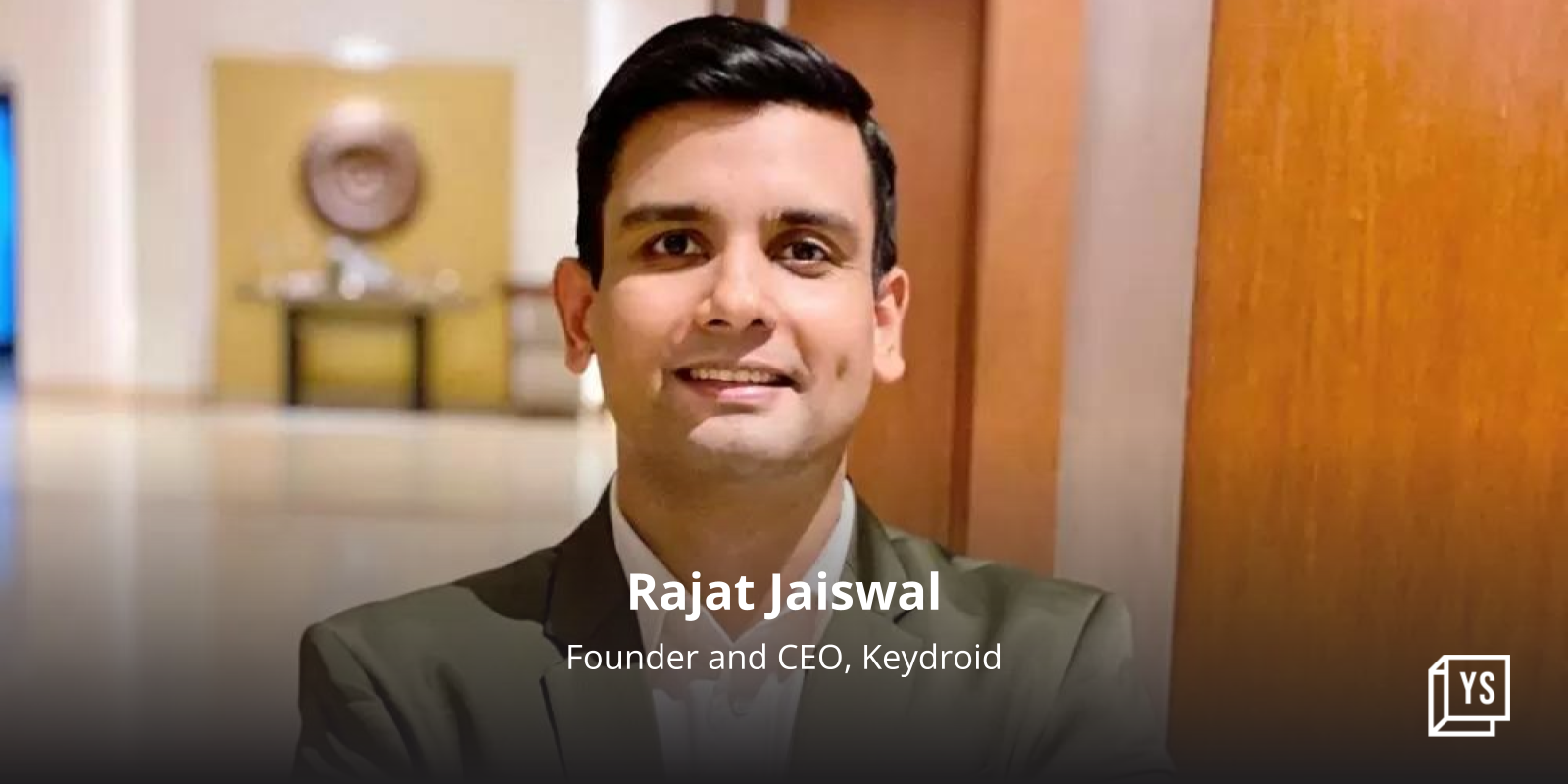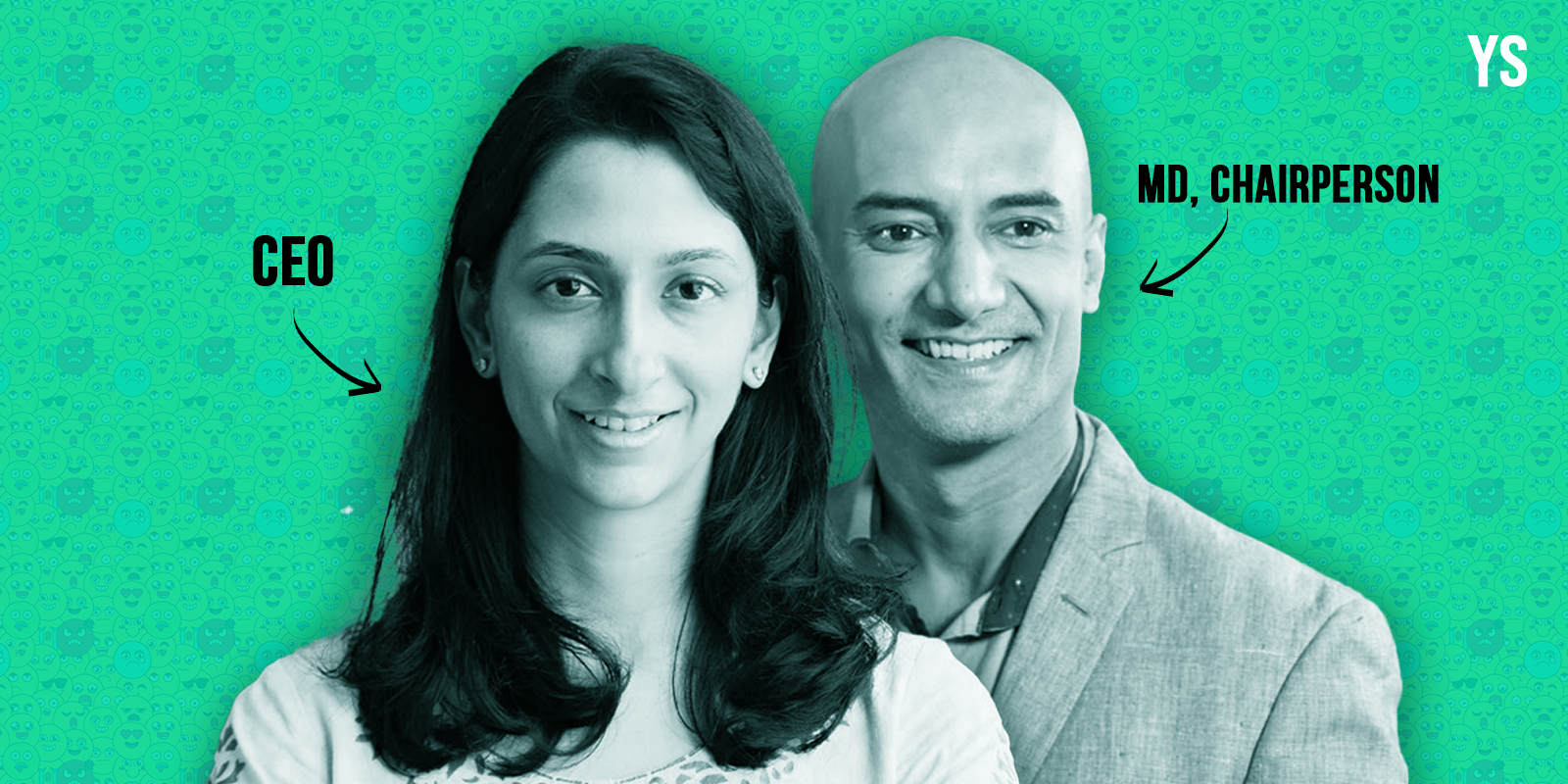
K-Startup Grand Challenge 2019
View Brand PublisherK-Start Challenge opened the doors for us to help more visually-impaired people through our hand-held assistive mobility device, say TorchIt founders
An estimated 285 million people across the globe are visually impaired. Life isn’t easy for them and the challenges they face range from moving around independently, to getting fair employment opportunities and not being able to join the workforce due to mobility & confidence issues.
With a view to uplift and empower this community and enable them to lead more independent & enriched lives, Hunny Bhagchandani set up Ahmedabad-based social venture TorchIt along with Mohit Chelani in 2015.

One of their key offerings is Saarthi, an assistive mobility hand-held device that can be used by visually-impaired people to maneuver around obstacles they encounter on a day-to-day basis. “The device comes with “99.7% obstacle detection accuracy” in any scenario, ranging from 2 to 8 feet. The product is simplistic, ergonomically designed and is battery efficient, and It can do much more than the traditional cane could with GPS and GSM feature. It’s also priced economically at Rs 2,200 (USD 25) in order to seek affordability for low-income household users and to ensure that the maximum number of people are able to derive its benefits,” says Hunny.
Portable, economical and accurate device
The product is not only economical but highly accurate as well, and comes with precise sensors that can perceive obstacles and provided feedback in the form of a buzzing sound and vibrations. In addition, the device also has a powerful battery and microcontroller to make it more efficient and long-lasting.
“Coming from an engineering background, I always felt the urge to serve the community with my technical understanding. During my social internship at the Blind People’s Association (Gujarat), I saw how an inaccurate assistive device almost caused one of my visually-impaired friends his life. On that day, I decided to help out my visually-impaired friends and eventually came up with a prototype that got converted to an MVP. Now our product helps out more than 12,000 visually impaired people across Gujarat,” says Hunny.
Making technology more inclusive
According to the Torchit co-founder, the true value of technology will only be derived when it is more inclusive, and not biased. “We believe that in the era of technological advancements, everyone should be able to get benefits from it. And also, better equipment with more functionality providing more comfort is what makes people happy.” While Torch-It expects a number of other companies to enter this space, most of them will initially focus on generating revenue which will limit their opportunity to create this kind of ‘true value’.

He adds, “Our marketing strategy aims at helping the visually impaired get the product at a relatively low price and also help people with that revenue by associating with CSR activities, government schemes and NGOs. Within 16 months after its launch, we uplifted 12,000 families with visually impaired people across Gujarat by providing them with 'Saarthi'.”
The TorchIt team is passionate about their cause and consists of young engineers and seasoned advisers. Hunny has experience in material & production management and was previously working at Adani Wilmar. Mohit serves has experience in project implementation and monitoring credit proposals, technological advancements and process outsourcing for Indian and global companies.
K-Startup Challenge: Partnerships, alliances, funding and mentorship
They entered the K-Startup Challenge to explore opportunities and alliances with companies and organisations in Korea to help the visually impaired/blind community there.
“Korea is a developed economy with a great focus on citizens’ wellbeing. Another important factor was that Korea is a tech catalyst so we intended to explore new product development which we intended to take to the world,” says Hunny.
He adds in addition to partnerships, alliances and funding opportunities, they also got great support from the community in the form of mentors & partners from across the globe. “The incubation opportunities have been really helpful as we were able to meet some great partners in Dot Inc and SemiSolutions, with whom we are exploring potential expansion plans within and outside of Korea.”
He says that their product has gained accolades from organizations across the world across Africa, Korea, UK, US, Australia and more.
“The product finds its context and relevance through the value proposition that it offers for the users. The K-Startup Challenge gave us the opportunity to reach out to thousands of our visually impaired friends in Korea, thereby helping us create a huge impact in resolving daily concerns around their mobility. The challenge helped us meet our working capital demand which would ensure that our products are made available to the customers. We were able to gain valuable feedback to improve our product based on this and are working on something that can help visually-impaired people recognise obstacles and read text with great accuracy.”
They believe that since visual impairment problems are a global concern, a solution that works in India can be replicated across any global market. “A demand exists in the global landscape as many visually impaired people come from lower economic backgrounds which restricts them from buying expensive products available in the market. Saarthi, intends to include features necessary in a device to provide independence in the lives of a visually impaired person. Additionally, we intend to price the product low, almost at 30 percent of the price of existing solutions available.,” he says.









